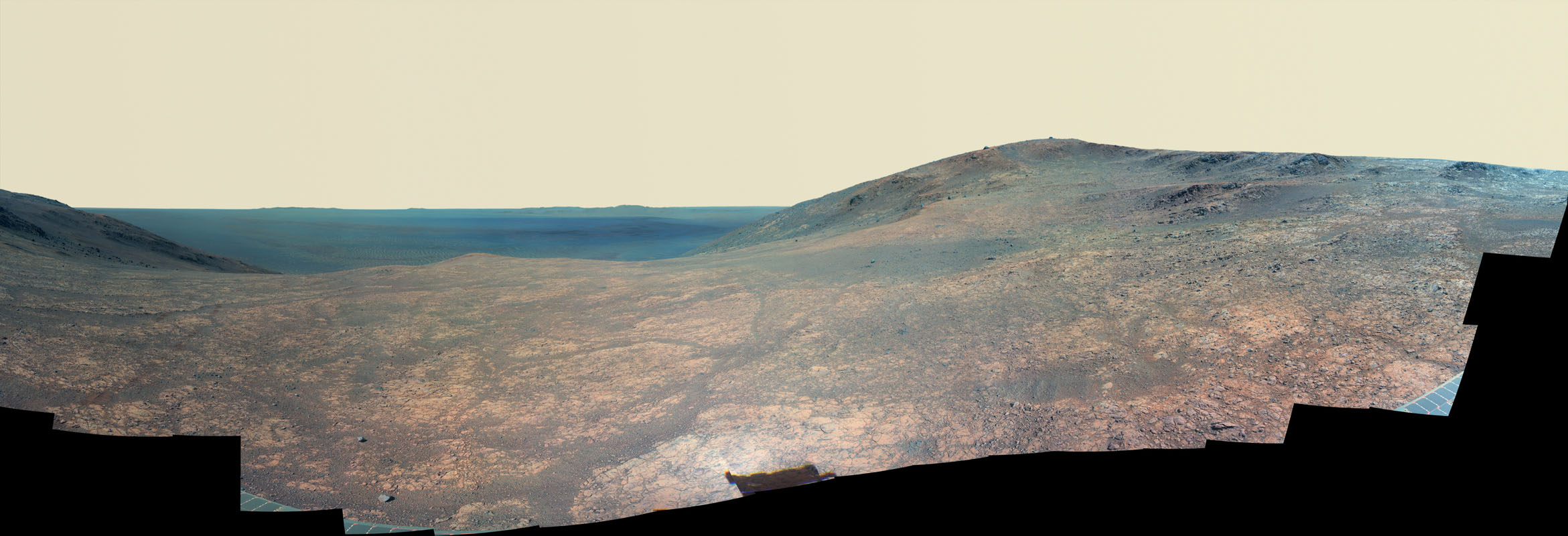Teen Bot on Mars! NASA's Opportunity Rover Celebrates 13th Birthday

NASA's Mars rover Opportunity has entered its teenage years on the Red Planet.
The golf-cart-size Opportunity rover landed on Mars on the night of Jan. 24, 2004, a few weeks after its twin, Spirit, touched down on the other side of the planet.
The two six-wheeled robots embarked on 90-day missions to hunt for signs of past water activity. Both Spirit and Opportunity soon found plenty of such evidence, showing that Mars was warmer and wetter in the ancient past than it is today. [See Mars photos by Spirit and Opportunity]
"Opportunity has taught us that the water on Mars would've been something that life could've lived in," Abigail Fraeman, mission deputy project scientist at NASA's Jet Propulsion Laboratory (JPL) in Pasadena, California, said in a new video celebrating the rover's 13th birthday.

And Spirit and Opportunity kept on rolling long after their warranties had expired. Spirit stopped communicating with Earth in March 2010, after getting bogged down in soft sand and losing the ability to track the sun with its solar panels. NASA declared Spirit dead a year later.
But Opportunity is still active, despite an arthritic robotic arm and issues with its flash memory (the kind that stores information even when the rover is powered down). Indeed, the rover keeps extending its record for the greatest distance traveled on the surface of another world; as of Jan. 16, Opportunity's odometer read 27.21 miles (43.79 kilometers). (Second place belongs to the former Soviet Union's Lunokhod 2 rover, which covered 24.2 miles, or 39 km, on the moon in 1973.)
Opportunity has been exploring the rim of 14-mile-wide (22 km) Endeavour Crater since August 2011. Its next major destination is a possibly water-carved gully about 0.6 miles (1 km) south of the rover's current location, mission team members said.
Get the Space.com Newsletter
Breaking space news, the latest updates on rocket launches, skywatching events and more!
Opportunity is one of two active robots on the Red Planet's surface. The other, NASA's car-size Curiosity rover, touched down in August 2012 to determine if Mars has ever been capable of supporting microbial life. Curiosity quickly answered that question in the affirmative, and is currently exploring the foothills of the 3.4-mile-high (5.5 km) Mount Sharp.
NASA plans to send two other surface craft to Mars in the near future. The agency's InSight lander is scheduled to launch in March 2018 on a mission to study the planet's interior structure, and the Curiosity-like Mars 2020 rover will follow two years later to hunt for signs of past Red Planet life.
Opportunity's landing occurred just after midnight on Jan. 25, 2004, Eastern Standard Time. But at the time, it was still Jan. 24 at JPL, the mission's headquarters, which explains why the anniversary is celebrated today (Jan. 24).
Follow Mike Wall on Twitter @michaeldwall and Google+. Follow us @Spacedotcom, Facebook or Google+. Originally published on Space.com.
Join our Space Forums to keep talking space on the latest missions, night sky and more! And if you have a news tip, correction or comment, let us know at: community@space.com.

Michael Wall is a Senior Space Writer with Space.com and joined the team in 2010. He primarily covers exoplanets, spaceflight and military space, but has been known to dabble in the space art beat. His book about the search for alien life, "Out There," was published on Nov. 13, 2018. Before becoming a science writer, Michael worked as a herpetologist and wildlife biologist. He has a Ph.D. in evolutionary biology from the University of Sydney, Australia, a bachelor's degree from the University of Arizona, and a graduate certificate in science writing from the University of California, Santa Cruz. To find out what his latest project is, you can follow Michael on Twitter.









